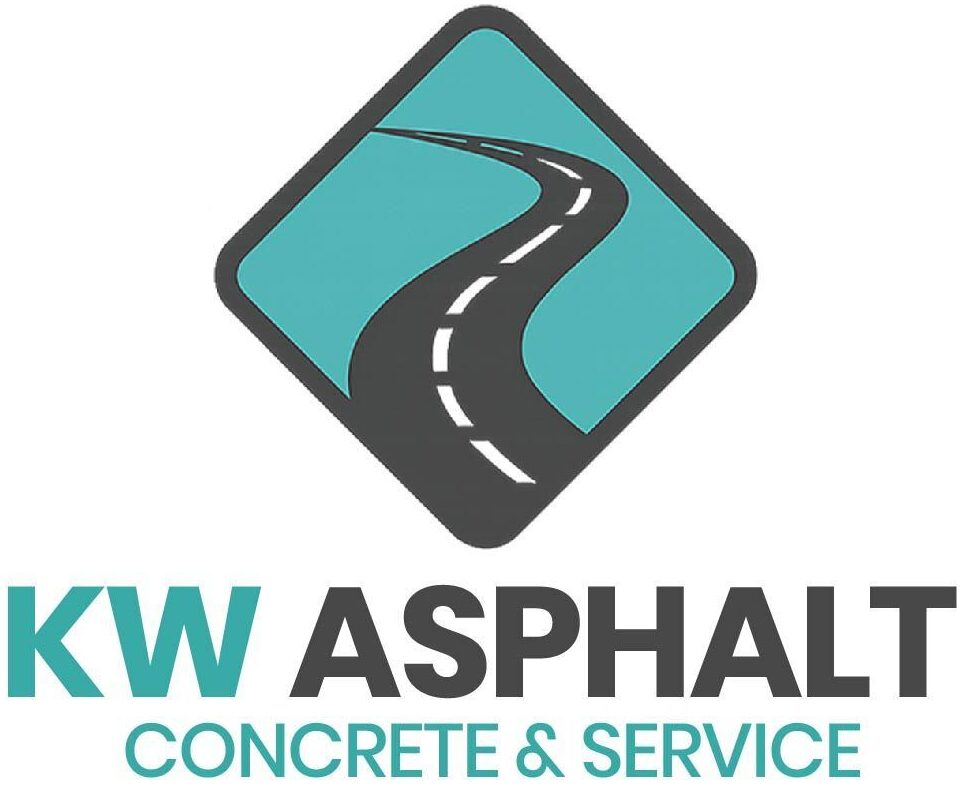Roads go through a lot every day. Heavy cars, hot sun, cold winters, and rain can all make roads wear down. Over time, this causes cracks to show up. This is where road crack filling becomes important. Fixing small cracks early can stop bigger damage from happening later. The weather is one of the biggest causes. When water gets into tiny holes in the road and freezes, it expands. This can split the road and cause more damage. Traffic makes it worse. Every car that drives over a crack pushes it open more. Eventually, you see cracks in a road or even wide gaps that are unsafe to drive over.
If roads aren’t fixed on time, the damage spreads. Small road cracks can grow into holes or deep lines that cost more to fix. That’s why it’s smart to understand what causes cracks and how to deal with them before they get worse.
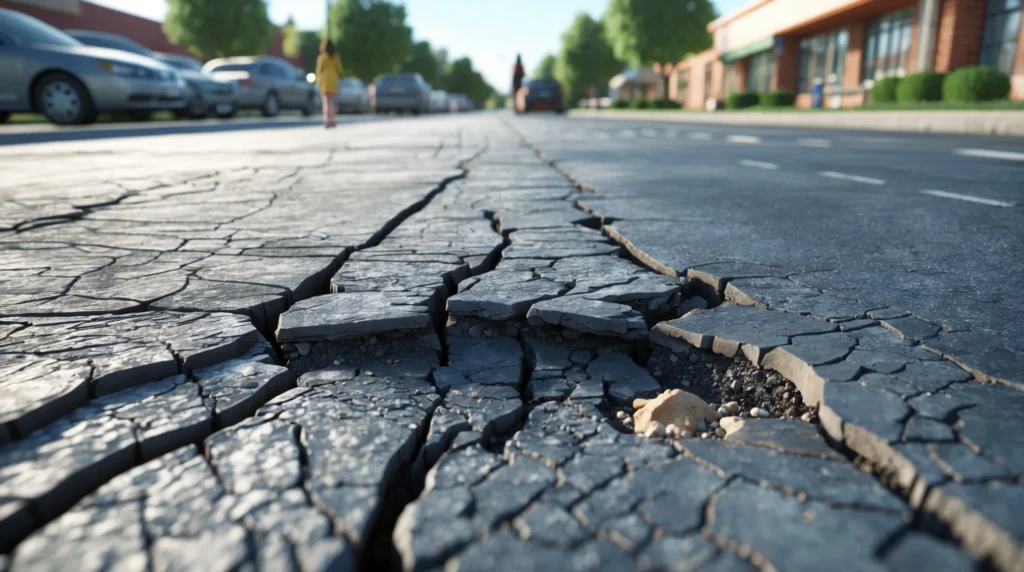
The Problem With Cracked Roads: Safety, Cost & Appearance
Cracked roads are more than just ugly. They can be dangerous and expensive, too. A crack in the street can grow into a pothole. That’s a problem for cars, bikes, and even people walking nearby. Water goes through the cracks and weakens the base of the road. When that happens, the road may sink or crumble. In parking lots, these cracks on road surfaces can cause tripping or tire damage. And the longer they stay unfixed, the more it costs to repair.
Looks matter too. Cracks make roads look old and worn out. In places like stores or schools, this can hurt the way people see the property. So fixing cracks in asphalt quickly keeps everyone safer and makes roads last longer.
What Is Road Crack Filling and Why Does It Matter?
Road crack filling is a way to stop small cracks from turning into bigger problems. It means filling in the broken parts of the road with special materials. This helps seal the crack and keeps out water and dirt. Crack filling is one of the most common and smart ways to keep roads strong. It’s not the same as fixing potholes. It’s used before cracks get too big. When you catch cracks early, you save money and time.
If cracks are left open, they spread fast. But filling in cracks with the right tools and sealants keeps the road smooth and strong. That’s why cities, schools, and businesses use this method to take care of streets and parking lots.
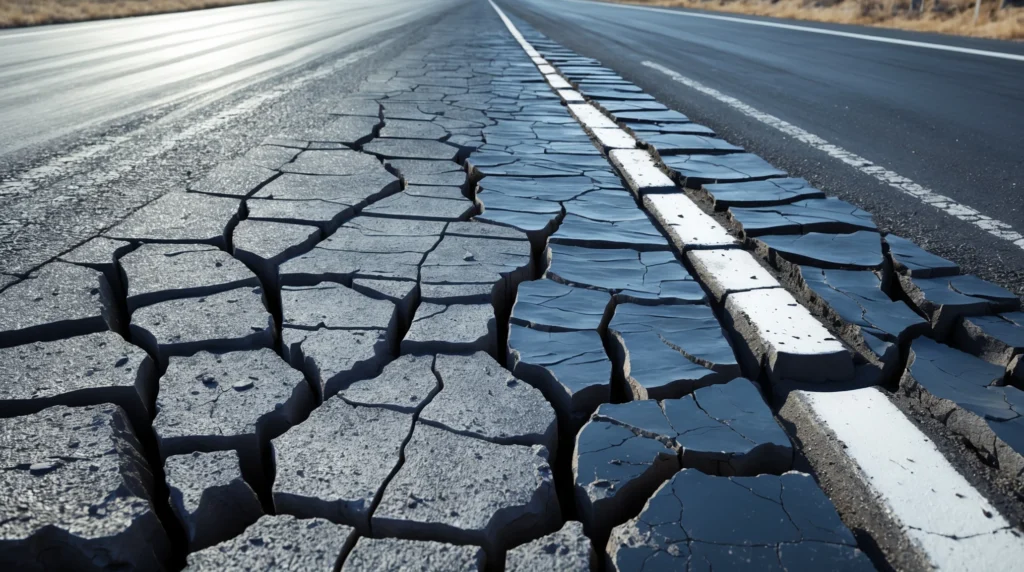
Types of Cracks That Appear on Asphalt Roads
Not all road cracks look the same. Knowing the kind of crack can help choose the best way to fix it. Here are some common types:
- Block Cracking: These look like big square patterns. They happen when the asphalt gets too old or dries out.
- Alligator Cracking: These look like a reptile’s skin. They show the road’s base is weak and may need more than a surface repair.
- Edge Cracks: These show up along the edges of roads. They often happen because of poor drainage or weak sides.
- Longitudinal Cracks: These run along the road, usually down the center. They can be caused by temperature changes or poor construction.
When you see these types of damage, crack-filling asphalt is often the best place to start. It helps seal the broken parts and keeps them from getting worse.
Choosing the Right Asphalt Crack Filling Materials
There are many kinds of asphalt crack-filling materials. Choosing the right one depends on the crack’s size, weather, and road use.
- Rubberized Asphalt Crack Filler: This is flexible and works well in places with hot and cold weather. It moves with the road as it expands and shrinks.
- Cold Pour Sealant: Good for small jobs and quick fixes. It’s easy to use, but not the best for high-traffic areas.
- Hot Pour Sealant: This is heated before it’s applied. It lasts longer and works better for larger areas or roads with cracked asphalt.
- Polymer-Modified Asphalt: These offer strong seals and are good for roads that take a lot of wear.
Choosing the right material helps seal the crack well and avoid repeat repairs. Experts like KW Asphalt know which option fits each job best.
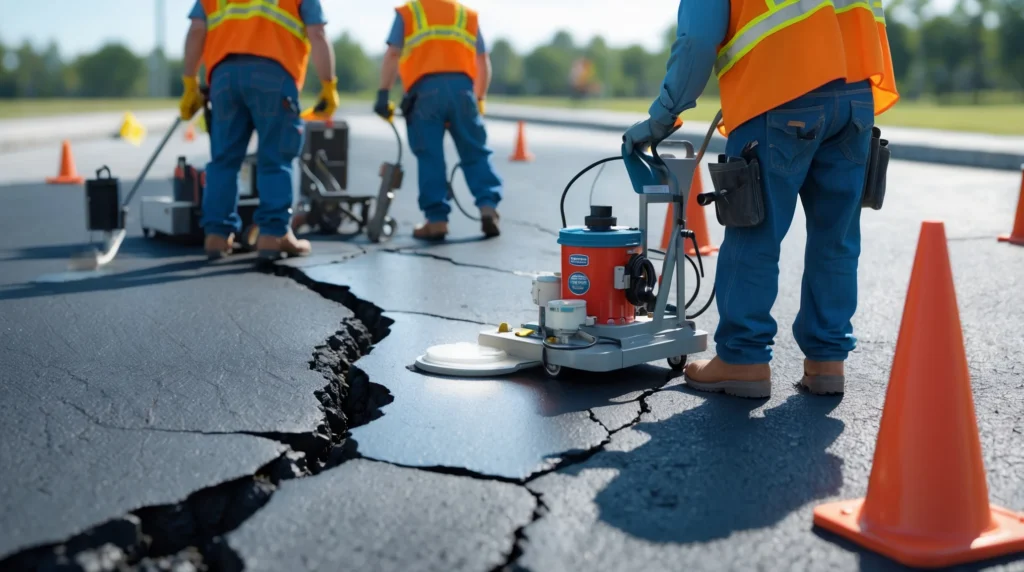
How to Fix Cracks in Asphalt the Right Way
Fixing cracks in asphalt takes careful work and the right tools. Here’s how it’s usually done:
- Clean the Crack: Dirt, weeds, or loose pieces must be cleared out. This helps the filler stick better.
- Dry the Area: Water makes the filler not stick properly. So the area must be dry before work starts.
- Heat or Prepare the Filler: Some fillers need heating, while others are ready to use.
- Apply the Material: It’s poured or pressed into the crack. The goal is to fill it all the way and make a smooth surface.
- Let It Set: Some materials dry fast, while others need time. Traffic should wait until it’s safe.
This process works for parking lots, streets, and driveways. It’s how professionals repair cracks in asphalt the safe and smart way.
When to Repair Cracks vs. Replace the Surface
Not every crack can be fixed with filler. Sometimes the damage goes too deep, and asphalt repair for parking lots or full resurfacing is needed. But how do you know?
Here are signs it’s time to do more than just fill asphalt cracks:
- The cracks are wide, deep, or in many places.
- The road feels bumpy, soft, or sunken.
- You see large holes or areas breaking apart.
If the cracks are still small, blacktop crack repair or pavement crack filler usually does the trick. But if the damage spreads, a full repaving may be smarter in the long run.
Knowing the difference between crack sealing and crack filling helps, too. Filling is for short-term repairs on smaller cracks. Sealing is better for longer-term protection on larger areas.
Why Professional Asphalt Crack Repair Makes a Difference
Trying to fix cracks on your own may sound easy, but it can lead to poor results. Asphalt crack repair takes the right tools and knowledge. Professional teams like KW Asphalt make sure the cracks are cleaned, dried, and sealed the right way. They use high-quality crack filler asphalt and follow safety rules.
Doing the job correctly also makes it last longer. Poor filling can peel off, collect water, or make the road worse. Experts understand things like:
- Which asphalt crack sealer works best for the weather
- How to fix edges and deep damage
- When to patch and when to seal
This saves money by reducing future repairs and keeping your roads safe.
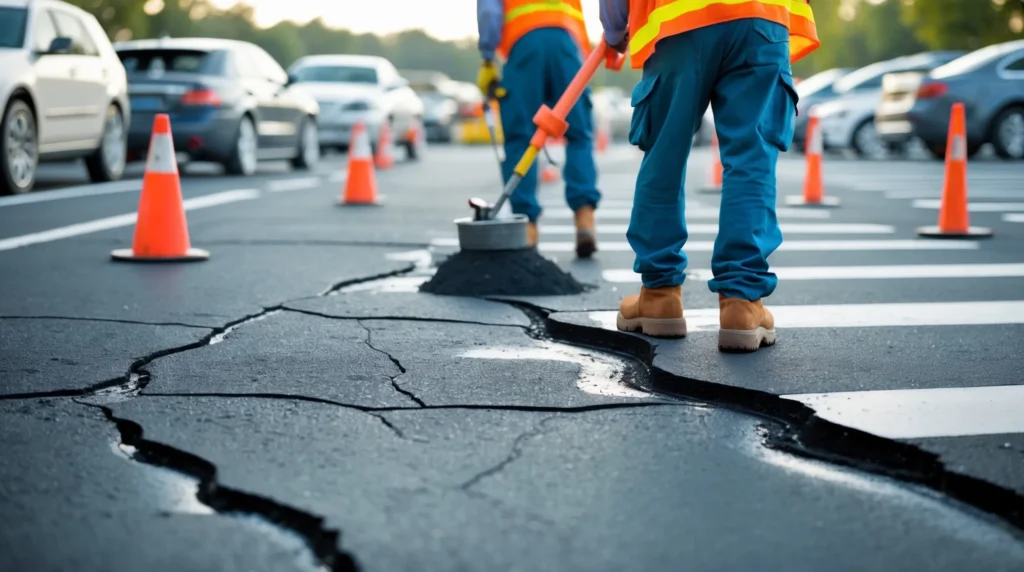
Best Practices for High-Traffic Areas and Parking Lots
Repairing cracks in asphalt in busy spots like parking lots or main roads needs special care. These places have constant movement from cars and trucks. That’s why it’s important to follow smart steps:
- Choose Long-Lasting Materials: Use strong fillers like rubberized asphalt crack filler.
- Time the Repairs: Work during low-traffic times to avoid delays or safety risks.
- Use Striping After Repairs: Repainting lines helps keep traffic organized.
- Check Often: Make regular checks part of the plan to stop small cracks early.
For areas like stadiums or schools, following best practices for repairing cracks in high-traffic areas helps avoid bigger problems and keeps everyone safe.
Road Crack Filling Services in Greenville, SC
Roads in Greenville, SC, go through hot summers, cold winters, and plenty of rain. All of this can cause cracks in the pavement, which weaken roads over time. That’s why many local businesses and communities trust KW Asphalt. Our team provides expert crack-filling services with the best tools and materials. Whether it’s a parking lot or a neighborhood street, we use proven methods to protect and improve your pavement.
With services like sealcoating and crack filling, we help roads last longer while staying safe and smooth. We understand the needs of local roads and deliver long-term results.
Don’t Wait: Protect Your Roads With Proper Crack Filling
Letting cracks grow can cost you more later. With proper asphalt crack-filling materials and the right care, your roads can stay strong, safe, and good-looking. Fixing small problems now prevents big problems later. Whether it’s a driveway, lot, or street, start with smart crack-filling asphalt today.
Looking for expert help? Contact KW Asphalt for fast, professional service that gets the job done right the first time.
